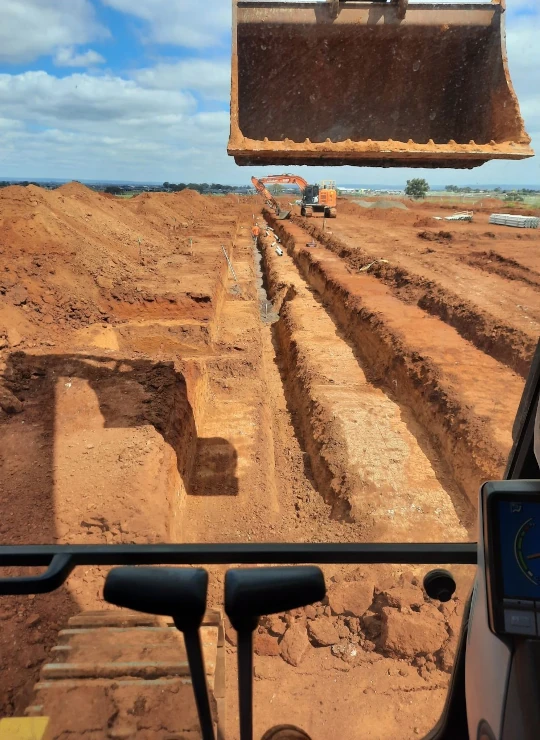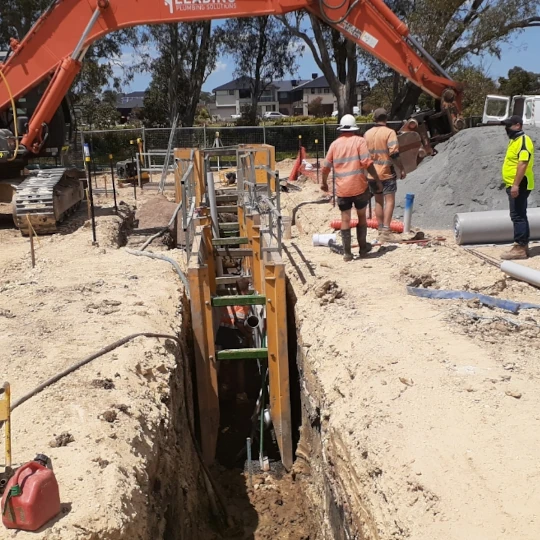Trenching Work
Trenching work is a crucial component of excavation, which involves the use of an excavator to dig long and narrow channels or ditches in the ground. These trenches are commonly utilised for the installation or repair of underground utilities, such as electrical lines, water pipes, gas pipes, and sewer lines.
Excavators are the preferred equipment for larger trenching work due to their efficiency and speed. The size and depth of the trench required will determine the excavator’s size and attachment. The excavator’s attachment can be changed to suit the job’s needs, such as switching from a bucket to a trenching bucket, to achieve the desired depth and width of the trench.
Safety is of utmost importance when performing trenching work with an excavator. The nature of the work and the use of heavy machinery demand that employees undergo proper training and utilise the appropriate safety gear to prevent accidents and injuries.


Trenching Work Progress
Another important aspect of trenching work using an excavator is minimising disruption to the surrounding environment, particularly in urban areas with a high concentration of underground infrastructure. Excavation companies must coordinate with local authorities and utility companies to ensure that their work does not interfere with existing infrastructure.
The impact on the local community must also be considered when planning trenching work using an excavator. As the excavation process can be noisy and disruptive, excavation companies should schedule work at times that minimise disruptions to the local community. By doing so, they can help ensure a smoother and more efficient excavation process.

